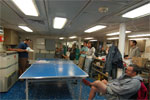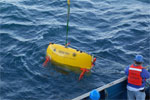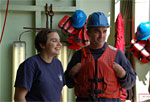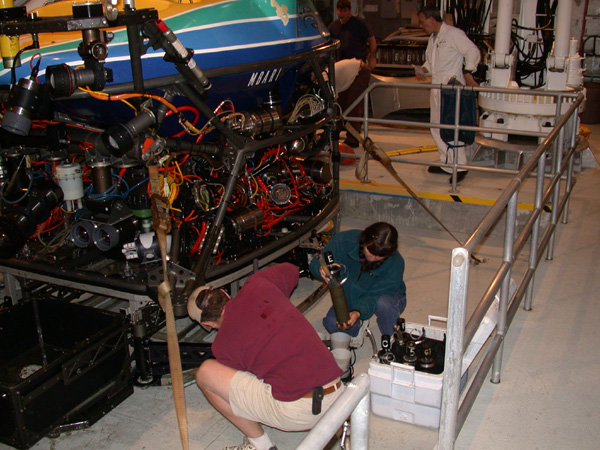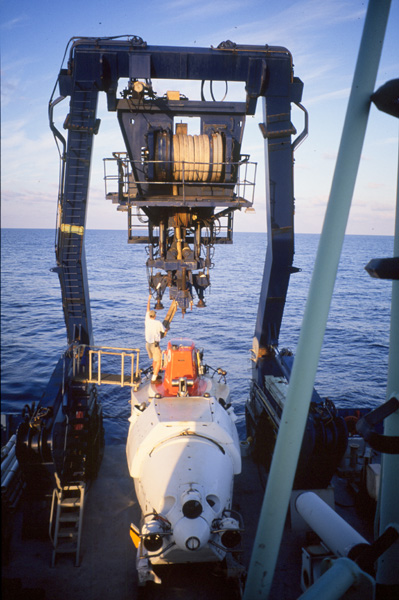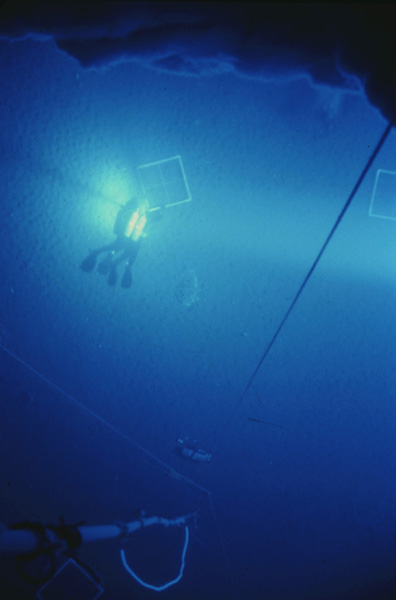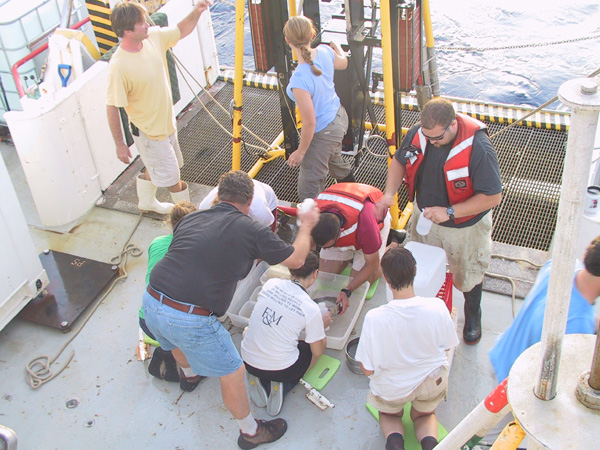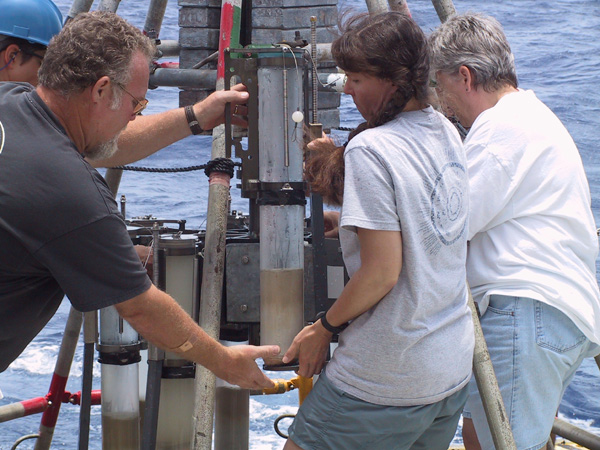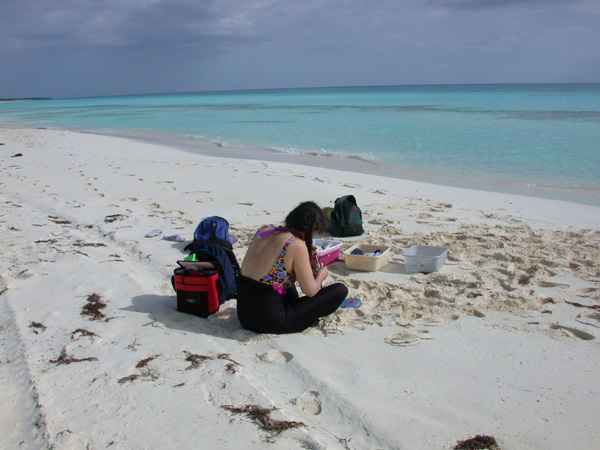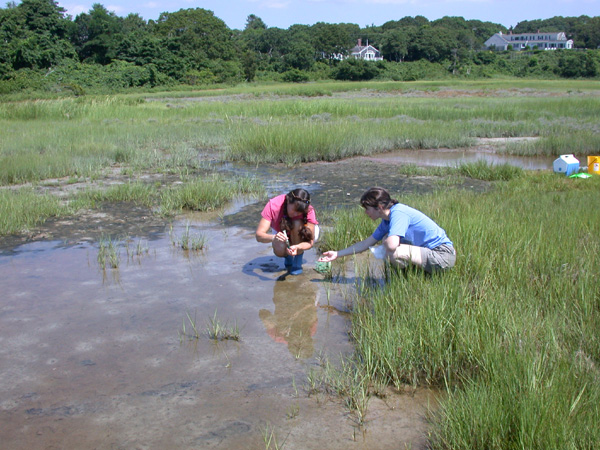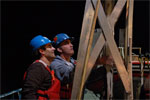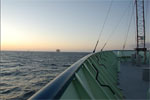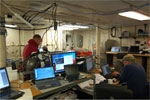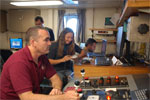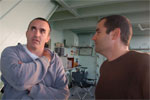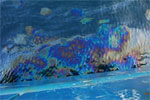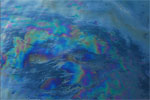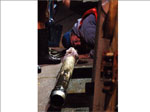R/V Atlantis cruise (2009)
This photo was taken while Bernhard was SCUBA diving under ~12-m-thick Antarctic sea ice. She has spent nearly 2 years in the Antarctic, over 9 seasons, working of foraminiferal ecology and cell biology. This work has been funded by NSF Polar Programs and was in collaboration with Sam Bowser (Wadsworth Center, New York State Department of Health). (S.P. Alexander)
In order to get deep-sea benthic foraminifera back to the lab alive so that we can culture them, we must sieve sediments quickly just after box-core recovery so that they do not die in the hot sun. This work is funded by NSF Ocean Sciences Marine Geology & Geophysics, and is in collaboration with Dan McCorkle (WHOI), Tom Chandler (University of South Carolina) and Tim Shaw (University of South Carolina). (K. Hintz)
In order to keep the contained benthos alive, multicores must be moved into a cold van as soon as possible after the corer is secured on deck. For this project, we use the FLEC method (developed by Bernhard and colleagues, see Limnology & Oceanography 2003) to determine, on the micron scale, where deep-sea benthic foraminifera are living with respect to the sediment-water interface. This provides information to better interpret the stable isotopic and trace metal signatures recorded in their shells. This work is funded by NSF Ocean Sciences Marine Geology & Geophysics, and is in collaboration with Dan McCorkle (WHOI), Tom Chandler (University of South Carolina) and Tim Shaw (University of South Carolina). (K. Hintz)
Collecting cores for micron-scale life position determinations (see Bernhard et al., 2003 Limnology and Oceanography) of magnetotactic bacteria in marsh microbial mats (Woodneck Beach, Cape Cod). This project, with Katrina Edwards (WHOI MC&G) and Sheri Simmons (WHOI-MIT Joint Program student), is to modify our life-position method to allow simultaneous fluorescent in situ hybridizations (FISH). Funded by WHOI's Ocean Life Institute. (W.E.N. Austin)
